-
ARABIAN NIGHTS: VOUME 1, THE RESTLESS ONE (Miguel Gomes 2015)
MIGUEL GOMES: ARABIAN NIGHTS: VOLUME 1, THE RESTLESS ONE (2015)
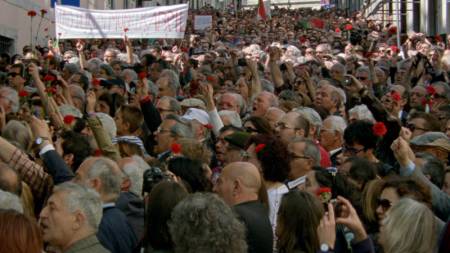
Gomes rails against austerity in a wildly ambitious compendium of genres
In his previous (2012 NYFF) appearance, his third feature actually, the remembered colonial adultery tale, Tabu, the Portuguese director Miguel Gomes showed himself to be an uneven but original and imaginative filmmaker. With his massive three-feature, six-hour "Arabian Nights" sequence, introduced in Directors Fortnight at Cannes, he reveals even more energy, ambition, and experimentalism. From the first frames of an over-long prelude, he exhibits a sure touch. But as time went on in Volume 1, which blends lengthy footage about Portugal's economic woes brought about by austerity policies with folkloric and documentary elements loosely tied together (rather arbitrarily) through an externally imposed 1001 Nights narrative structure, the combination seemed increasingly uneasy and unconvincing. What have an exploding beached whale, ruminations about massive shipyard layoffs, a fantasy about officials magically given perpetual erections, men narrating their unemployment experiences, a satirical political fairy tale about a cockerel, and documentary footage of a war on wasps to save bee colonies got to do with each other, or with the Arabian Nights? One is impressed, but one has doubts.It's a lot to swallow, and final assessment must await a viewing of all three parts.
We're told Gomes worked for a year (2013-2014) with journalists recording the devastation caused in Portugal by austerity programs; that this is linked together by a local Scheherazade (Crista Alfaiate). But despite a bold (and loud) style, this seems, in its first part, more a matter of ambition than actual accomplishment or coherence. Above all it is coherence that is lacking. Gomes announces (in his free use of big inter-titles) that he is not adapting the Arabian Nights, merely using its structure. But this is simply a way of saying that his use of the classic Arabic folktale framework is superficial, and tacked on in an effort to hold together unrelated material whose combination he himself admits at the outset was foolish.
Variety's Jay Weissberg points out that Gomes has hired Apichatpong Werrasethakul's usual dp Sayombhu Mukdeeprom here, but this hasn't the magical glow of a "Joe" film. Gomes achieves an amusing self-reflectiveness at the outset by showing himself running away from his own film crew, depressed at economic and social events in the country and overwhelmed by the absurdity of his own hubris in planning to depict them in a way that blends the folkloric and the epic. But this only illustrates the film's tendency, and ability, to incorporate all elements that arise, including the director's self-doubts. Whether anyone other than Gomes's most devoted fans will want to stick around remains uncertain, but the flashy series, enlivened (however artificially) by the use of fire, fireworks, and the aforementioned exploding beached whale and by an effective, and loud, use of music ranging from Rimsky Korsakoff to Aarvo Pärt, shot in brightly colored widescreen 16mm., is ideally suited for the more dedicated festival goers, especially those opposed to the right's ill-fated Great Recession austerity measures. The Volumes will be reviewed one by one.
Arabian Nights: Volume 1, The Restless one/As Mil e Uma Noites: Volume 1, O Inquieto, 125 mins., debuted in Directors Fortnight at Cannes, May 2015. Many other festivals, including the New York Film Festival, in connection with which it was screened for this review. Released 24 June in Paris, it received excellent reviews (AlloCiné press rating 4.2). The French critics admired Volume 1's blending of poetry and politics.
Last edited by Chris Knipp; 09-23-2015 at 08:40 AM.
-
Arabian nights: Volume 2, the desolate one (2015)
MIGUEL GOMES: ARABIAN NIGHTS: VOLUME 2, THE DESOLATE ONE (2015)
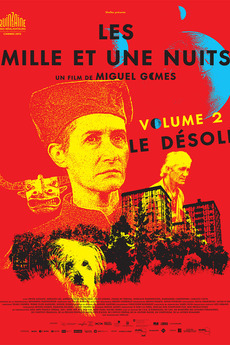
More meandering narrative from Gomes fails to deliver his message
Guy Lodge in Variety: "Only three tales are told here by the project’s wily mythical narrator Scheherazade, though one in particular sprawls and subdivides itself in such alluringly vine-like fashion that viewers will hardly notice 133 minutes ticking by." That is debatable. However, that long open air "trial" session, held under cover of darkness seemingly with a whole community presided over by a female judge, reminded me of both the actual Arabic 1001Nights, with its succession of sometimes outrageously fanciful and interrelated folkloric tales, and Abderrahmane Sissako's (incomparably superior) open air trial in his Bamako by representatives of the African people of the IMF and the World Bank in a public square where villagers go on pursuing their normal lives. There is an example of a brilliant wedding of politics, philosophy, and everyday life, which may be what Miguel Gomes is striving for. But while he becomes more involved in narrative and less preachy in Volume 2, he also rambles, his film as much of a messy hodge podge as Volume 1.
Gomes has fun with a classic storytelling tone with this summary: "In which Scheherazade tells of how desolation invaded men: 'It hath reached me, O auspicious King, that a Judge will cry instead of giving out her sentence. A runaway murderer will wander through the land for over forty days and will teletransport himself to escape the Guard while dreaming of prostitutes and partridges. A wounded cow will reminisce about a thousand-year-old olive tree while saying what she must say, which will sound none less than sad! The residents of a tower block in the suburbs will save parrots and piss inside lifts while surrounded by dead people and ghosts; including in fact a dog that…'. And seeing the morning break, Scheherazade fell silent." There is a hint of self-satisfaction here,though, at the sheer richness of his own invention.
This is not all of it. The concluding section is a series of stories that take place in a poor housing development, which concludes with an old couple who give their found dog, Dixie (a Maltese poodle whose photogenic friskiness helps enliven things for a while) to an impoverished younger couple, and then commit suicide. Here Gomes comes back more clearly to his initial concern with Portugal's state of economic crisis and the failure of the austerity policy to address it -- though the woes of these people could exist in any economy. This segment made me think of Krzysztof Kieślowski's Decalogue -- another comparison that, like the Sissako one, leaves Gomes in the dust, sputtering for air, signifying little.
[I]Arabian Nights: Volume 2, The Desolate One/As Mil e Uma Noites: Volume 2, O Desolad 131 mins., debuted, like Volumes 1 and 3, at Directors Fortnight at Cannes, and shown at over a dozen other international festivals, including the New York Film Festival 1 October. Screened for the latter for this review. A Kino Lorber release. U.S. Premiere.
Last edited by Chris Knipp; 09-23-2015 at 08:47 AM.
-
ARABIAN NIGHTS: VOLUME 3, THE ENCHANGED ONE (Miguel Gomes 2015)
MIGUEL GOMES: ARABIAN NIGHTS: VOLUME 3, THE ENCHANTED ONE (2015)
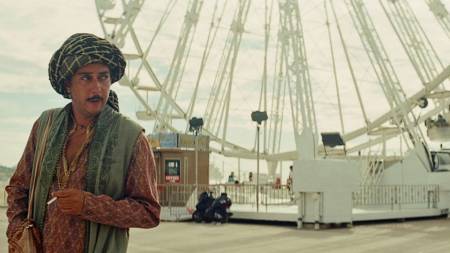
AN IMAGE FROM MIGUEL GOMES' ARABIAN NIGHTS, VOLUME 3
Gomes dives deeper into documentary territory with two hours about chaffinch fanciers
After watching Volume 3, we can sum up what each of the three films is like. Volume 1 is at once self-referential (the director running away from his crew); playful about its frame-tale; and observational-documentary. It's overtly -- and somewhat repetitiously and annoyingly -- self-conscious and doctrinaire in its protest against Portugal's destructive period of economic austerity. Volume 2 does something of an about-face and stops preaching to the viewer. Instead it delves into narrative with a vengeance, imitating the original 1001 Nights tales' far-fetched and intertwined incidents, though still blending fantastic and documentary elements, since it relies largely on non-actors. Volume 3, in effect, narrows the focus further, playing around with the Arabian frame-tale idea eccentrically for a bit in a Mediterranean setting at the outset, but then hunkering down into a single narrow focus: a lengthy, rambling documentary on a Portuguese passion we didn't know about and maybe didn't need to: catching, breeding, and training chaffinches and entering them in competitions where they are judged for the richness and complexity of their vocalizing.
There is a vague tie-in to the trilogy's economic theme in that the chaffinch-enthusiasts seem often to come from the working class housing blocks Gomes referred to in Volume 2 -- blocks he explains here were built where formerly there were shanty towns -- though how poor Portugal has long been as a country isn't gone into. It isn't made clear, but some of these men may get so involved in their hobby because they're unemployed. Be that as it may, what we get is just one observed scene after another in a long ramble quite artificially broken up by announcing that Sheherezade has ended one night's storytelling and begun another.
Perhaps to break the monotony, but not successfully, this Volume is exceptionally replete with yellow on-screen texts constantly adding notes and jottings about history, the birds, and this and that. Some may see these excessive texts as amiable eccentricity; others may call it reckless self-indulgence. Either way it is tedious, and Volume 3 emphatically confirms the impression that Miguel Gomes has put one over on the festival juries with this attention-getting, loud, colorful, eccentric, but ultimately unrewarding set of films.
Arabian Nights won the top prize at the June 2015 Sydney Festival, so Guardian's Australian correspondent Luke Backmaster was obliged to write about it, though he is less than enthusiastic. He begins by describing it by its length: "The first and most predictable adjective that comes to mind when describing Miguel Gomes’ surreal, colorful, funny, poignant and at times befuddling Portuguese comedy-drama Arabian Nights is 'long'." He notes that at "some 338 minutes" it's "a thoroughly butt-crunching affair, one part cinematic endurance test and two parts intellectual exercise, more likely to induce back pain or deep vein thrombosis than any other film you’ll see this year or, probably, ever." He's not far wrong (though there are other endurance tests in the festival world). But I would add one other detail. Not only is this marathon a butt-cruncher, it's also frequently ear-splitting. Gomes has the sound ramped up to blockbuster actioner level or beyond. He seems bent on periodically turning festival halls or art house cinemas into discos during those six-plus hours he has taken out of our lives.
Buckmaster appears mistaken in calling the chaffinch segment faux documentary. I don't think the men are playing anybody, just doing their hobby thing. The only question is why this obscure activity should be deemed worthy to take up most of the last third of such an ambitious and flashy trilogy. But the Aussie is right again in his conclusion: Gomes' thingie "is everything a brave cinephile broaching a six-hour hit of Portuguese cinema feared Arabian Nights would be: dull, exhausting and seemingly endless, with symbolic significance only for those willing to make loose and creative connections."
Arabian Nights: Volume 3 - The Enchanted One/As Mil e Uma Noites: Volume 3, O Encantad, 125 mins, debuted with Volumes 1 and 2 in Directors Fortnight at Cannes May 2015, thereafter at fifteen other festivals. Screened for this review as part of the New York Film Festival. US premiere. A coming Kino Lorber US release set for 18 December 2015.
Last edited by Chris Knipp; 09-20-2015 at 07:17 PM.
-
DE PALMA (Noah Baumbach, Jake Paltrow 2015)
NOAH BAUMBACH, JAKE PALTROW: DE PALMA (2015)

BRIAN DE PALMA
A New York Film Festival Special Event film celebrates director Brian De Palma
This affectionate but also relentless film portrait features the American director Brian De Palma talking to young directors Noah Baumbach and Jake Paltrow about his films, his filmmaking style, and his life. In his Variety review Guy Lodge describes De Palma as "New Hollywood’s foremost Grand Guignol artist." That is how he is seen: gloriously over-the-top. And he did begin with and often go back to lurid horror. Perhaps because of his loud popular style, he was championed by Pauline Kael, which he says meant he was always debated. Given the right material, like the surreal tabloid world of James Ellroy, De Palma could be precise and just. I found his version of The Black Dahlia closer to Ellroy than the celebrated L.A. Confidential. But De Palma's luridness is not to everyone's taste.
De Palma's career is varied, ranging from his blockbuster bid with Carrie, wich won him studio clout, to the violence and depravity of Scarface, to the more sensitive gangster picture Carlito's Way. And ranging, Baumbach noted in a post-screening Q&A, over most of the things that can happen to a director working with and without studio support. His notorious, grand failure is The Bonfire of the Vanities, an adaptation of Tom Wolfe's perhaps un-adaptable novel in which he says he failed because he gave in too much to pressure from studio executives to make alterations.. Another big failure was Mission to Mars. Perhaps because he's Italian-American, he has been a darling of the Venice Film Festival. Even his Redacted (NYFF 2007), a fairly crude indictment of the US Iraq war, won the Silver Lion at Venice.
As De Palma talks, apparently in a single long interview, Baumbach and Paltrow, who claim a decade-long friendship with him, edit in clips to illustrate the movies and their influences. De Palma is very specific and not very theoretical, but makes several key general remarks along the way. The rest we have to deduce by ourselves. First he says he doesn't work from character as they (Baumbach and Paltrow) do, but starts with "structure" and lets the film develop from there. He also says that everybody remarks on the genius of Hitchcock, but he is the only director to follow Hitchcock's methods extensively. De Palma indeed has constantly used Hitchcock films as a source, starting from his early admiration of Psycho and Vertigo. It's well known how otherwise frankly derivative De Palma's work has been. Obviously his Blow Out grows directly out of Antonioni's Blowup, with Coppola's The Conversation as a kind of catalyst. He explains how The Untouchables' finale in the train station is has a direct borrowing from the famous Odessa steps sequence from Eisenstein's Battleship Potemkin. Hitchcock's Rear Window and elements of Vertigo were the basis for Body Double, and Vertigo was also the inspiration for his Obsession. Dressed to Kill is a homage to Psycho, including the similar early killing off of lead actress and the concluding exposition delivered by a psychiatrist.
De Palms explains that because of the long silences and long tracking shots in his films he had much need of a score and so had strong relationships composers, notably Bernard Hermann (six films), Pino Donnaggio (seven films), and Ennio Morricone (for The Untouchables, another of his notable later successes, as was the first Mission: Impossible ). De Palma has some interesting stories to tell about these composers and his use of their music. He comments that contemporary films too often allow sound effects and dialogue to spoil the effect of the score.
The one long interview that seems to provide the material for this film includes De Palma's description of his dysfunctional family, his Quaker education, his undergraduate studies at Columbia and graduate work at Sarah Lawrence, and his various marriages and divorces, but personal details are firmly subordinated to the 28-film oeuvre, but he does describe his early and in some cases long-term relationships with major film figures who were contemporaries: Spielberg, Lucas, Coppola, Scorsese, De Niro. Baumbach and Paltrow's illustrative material is invaluable. Clips showing long tracking shots (Pacino, Nick Cage), of chases and shootouts, help give just a glimpse of De Palma's technical gift for storytelling with motion.
The chronological approach means De Palma can describe developments in the film industry, his role in the New Hollywood when briefly directors could be independent and creative in a studio setting, followed by the takeover of the bottom-line obsessed aesthetically challenged producers of the Eighties and onward. As he comes to the end of his of a nearly fifty-year career, De Palma says a director's best work is usually done in his twenties and thirties and forties, and suggests that he may not be up to the physical demands of the job now as he nears seventy: so he takes us from the beginning to the end. He may not be the most profound or uplifting filmmaker, but he must be one of the frankest, humblest, and clearest. This is a highly informative film about De Palma's work; it's actually the kind of film one should have on DVD and watch over and over to focus on and cull out elements.
De Palma, 107 mins., debuted at Venice 9 September 2015; also 30 September at the New York Film Festival, as part of which it was screened for this review. US theatrical release 10 June 201 (limited, Angelika Film Center NYC).
Video of the Baumbach-Paltrow post screening press conference.
Guy Lodge review for Variety.
Last edited by Chris Knipp; 06-10-2016 at 05:08 PM.
-
LES COWBOYS (Thomas Bidegain 2015)
THOMAS BIDEGAIN: LES COWBOYS (2015)
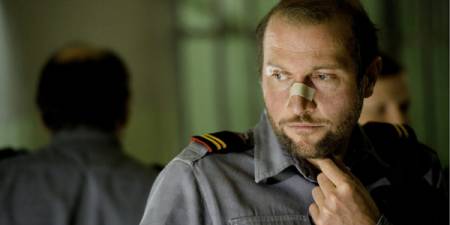
FRANÇOIS DAMIENS IN LES COWBOYS
Overambitious and under-involving directorial debut for Audiard scriptwriter
Thomas Bidegain, who has written for director Jacques Audiard (his 2009 A Prophet and 2012 Rust and Bone), turns to directing for Les Cowboys with a script by Noé Debré. Unfortunately, it's a disaster, tendentious and overwritten. It begins with an interesting milieu, French people who adore the American West and like to gather in cowboy clothes, ride horses, and sing western songs. The time is 1995. There, a man called Alain (François Damiens) sings a verse of "Tennessee Waltz" to warm applause and shares a waltz with his daughter Kelly, and then, as the evening wears on, gradually realizes Kelly has disappeared. Events follow hard -- too hard and fast -- upon one another as it turns out she has a secret Arab boyfriend who's a jihadist, and she's run off with him.
Alain gets fed up with the police and tries to intimidate the boyfriend's family, then launches his own search for Kelly, even though she has sent a letter saying she has run off voluntarily with her Muslim boyfriend and not to look for her. He traces Kelly to gypsies, then to Belgium, then farther afield, going on a rampage of angry searching, bent on revenge like some John Ford hero, meeting a sudden end after being seen in Syria and apparently having been in Yemen; the plot skips ahead, difficult to follow, as 9/11 and the emergence of Al Qaeda deepen motivations. The usually sympathetic Damiens never seems to find a rhythm of his own either here. In a Variety review Peter Debruge points out a relationship to Ford's The Searchers, and thinks Bidegain is carrying further the explorations of machismo he pursued in his scripts for Audiard. (That may be, but less plausibly; and Rust and Bone already strained the limits; but Audiard seems capable of making anything come to life, and is brilliant with actors, a quality Bidegain may not share.)
As abruptly as the father's search is forcibly ended by his accidental death his son takes over. Georges, or "Kid," his cowboy nickname (Finnegan Oldfield), hitherto passive and silent, but who had stubbornly refused to go with his father on his last search, drop his job as a short order cook and sets out with his own kind of fervor on his own dogged search, losing himself in faraway countries, more flexible and changeable than his father, following hints and traces of his sister. He runs into John C. Reilly in Pakistan, of all places, where Reilly's character, of all things, is a human trafficker. Reilly seems to play it for laughs, which won't wash, and his presence stands out by a mile. The script is heavy on events and local atmosphere, with the ersatz French cowboys ironically the most authentic -- and weak on characterization. Characters have little depth and behave implausibly.
With Kid as the new protagonist in countries where French isn't known, English takes over. Though Kelly's boyfriend/abductor was Maghrebi, Arabic is not heard from, nor, despite references to 9/11, Madrid, and the London bombings, is there any exploration of the origins and nature of jihadist thinking or of how Europeans, particularly women, can be drawn into it. (A late scene does briefly show a mainstream French dislike of hijab-wearing.) In Pakistan, Kid suddenly has a European charitable organization girlfriend (Antonia Campbell-Hughes), randomly thrown in and later as quickly dropped. Movement from one situation to the next tends to be jerky throughout the film, which isn't always easy to follow.
Thanks to some astonishing coincidences, Kid's search turns out more successful than his father's, and he ends up involved in a relationship more surprising than anything hitherto in this too arbitrary-feeling tale. The film's attempt to be topical and important and the absurdity of the overplotting suggest Bidegain, who certainly has much talent as a screenwriter, could still use a strong sure hand like Audiard's -- a collaborator more aware than he seems to be of how things play on screen and what moves audiences. Let's hope he has a stronger collaborator for his next directorial outing. Debruge calls Les Cowboys "an elliptical art film that’s tough to watch, yet continues to haunt in the weeks that follow." True, there are several memorable scenes. But the opacity of the characters and the crudeness of the transitions between plot developments mar these memories, and in some ways Les Cowboys echoes the worst mainstream "topical" conventions.
Les Cowboys, 114 mins., debuted at Cannes May 2015 in Directors Fortnight; also in other festivals, including Toronto, Busan, and London. Screened for this review as part of the New York Film Festival. French theatrical release scheduled for 25 November 2015.
Last edited by Chris Knipp; 09-19-2015 at 10:19 AM.
-
INGRID BERGMAN IN HER OWN WORDS (Stig Björkman 2015) Spotlight on Documentary)
STIG BJÖRKMAN: INGRID BERGMAN IN HER OWN WORDS/JAG ÄR INGRID (2015)
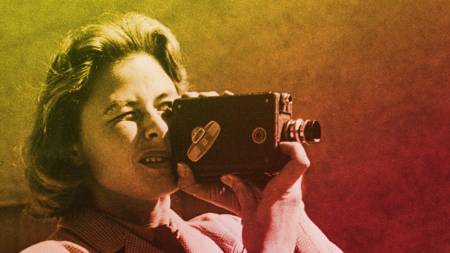
Ingrid Bergman's life reviewed in interviews and pictures
Ingrid Bergman: In Her Own Words/Jag är Ingrid is a Swedish documentary that was screened in the Cannes Classics section at the 2015 Cannes Film Festival -- where it received a special mention for L'Œil d'or award.
This is a warm picture of a great actress who had a complicated life with three husbands, and lived in Sweden, the US, Italy, France, and London. It is not just in Swedish. There are interviews in English, French, and Italian as well. Ingrid's loss of her parents when she was young may have contributed to her intentional rootlessness. And she compensated for this by scrupulously preserving her old photographs, journals, school papers, and other memorabilia, always carrying them from one new life to the next. We hear from the journals. We also get more than our fair share of what the Italians call "filmini" -- home movies, mostly showing Ingrid's young children. If you don't want to see a famous star's home movies, avoid this film.
"In Her Own Words" is not entirely entirely a good description of the documentary. In fact, Ingrid Bergman's children appear and speak very frequently, in various languages. Pia and Isabella speak only English. Roberto (the son, not the husband) speaks frequently in English, and occasionally in Italian. The gist is that while Ingrid's career and her love affairs came first and she was not a mother figure to her children, she played the role of friend to them as they grew up, and however imperfect she was as a parent, she was so charming and such fun to be with that they never felt any resentment.
New to some viewers is the fact that Ingrid had a significant affair with Robert Capa, the great photojournalist. (He died in 1954 in Vietnam, but this isn't mentioned, nor how the affair ended.)
There is some treatment of the scandal aroused, especially in the US, by Ingrid's abandonment of her marriage to Dr. Peter Lindström and taking up with Roberto Rossellini, which led to her being condemned in the US Congress and effectively banned from the US for years. But she was able to make a big comeback with the movie Anastasia in 1956, for which she won her second Academy Award, of three. Ingrid's Hollywood career with David O. Selznick, later with Hitchcock, was an immediate and great success. She was a glowing beauty and a natural on camera: she was a star. Yet her restlessness and desire for change led her to abandon Hollywood. She loved Rossellini ore than his filmmaking method; neorealism and improvisation were not her style, though she made one film with him that is mentioned, Stromboli. Mention is omitted of the four other films Rossellini made with Bergman in them: Europa '51, Viaggio in Italia, Giovanna d'Arco al rogo, and La Paura (Fear). The first Italian film is covered in the film, and also Casablanca; but all Ingrid's Hollywood career isn't covered, nor is there much detail about her life in Hollywood. The home movies only show the Benedict canyon house and the family cavorting around the pool. The limitation of home movies is so much happens away from home, if you're a big star.
The documentary goes into some detail about Ingrid's her 1978 final screen appearance, when she was seriously ill with cancer, in Ingmar Bergman's Autumn Sonata.
The kids don't want to speak ill of their mother (who played Joan of Arc so often they had to see her bur a lot), and another limitation of this film is that it offers no criticism of a life and lifestyle that must have produced enemies as well as detractors. All in all this is only a middling documentary with a preponderance of talking heads and archival footage. But its subject is too remarkable and beloved for this not to be a must-see for fans of film history.
Ingrid Bergman: In Her Own Words/Jag är Ingrid, 114 mins., debuted at Cannes; other film festivals followed. Screened for this review as one of the Documentary section films of the 2015 New York Film Festival. Showed on French TV in Aug. 2015. US theatrical release scheduled for 13 November 2015.
Last edited by Chris Knipp; 09-23-2015 at 04:16 PM.
-
ROCCO AND HIS BROTHERS (Luchino Visconti 1960) - Revivals
LUCHINO VISCONTI: ROCCO AND HIS BROTHERS/ROCCO E I SUOI FRATELLI - Revivals (1960)
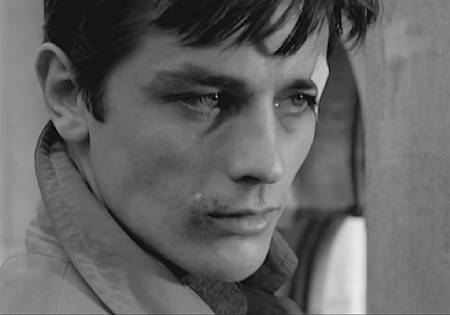
ALAIN DELON IN ROCCO AND HIS BROTHERS
Visconti's operatic epic of a southern family disintegrating in Milan arouses mixed feelings today
There are five Parondi brothers, and the film is divided into five chapters moving from eldest Vincenzo (Spiros Focás) through the lazy, badly flawed Simone (Renato Salvatori) to the saintly, self-destructively innocent Rocco (Alain Delon), to the hard working young Ciro (Max Cartier), who goes to work at the Alfa Romeo factory, to the child Luca (Rocco Vidolazzi), who gets only a brief coda. After a difficult arrival from Lucania, four of the brothers and their traditional earthy southern Italian "mamma" (the great Katina Paxinou) settle into public housing and the eldest, Vincenzo, who was already in Milan with a job and fiancee, fades from the picture: the main focus for most of the film is on the tragic conflict between Simone and Rocco which turns on their love of the prostitute, Nadia (Annie Giraudot).
Another 4K restoration from Bologna, with a couple of pieces of previously excised footage restored, this most populist, Italian, and emotional of Visconti's films is certainly worthy of a reexamination and a reassessment, which turns out to be problematic. There's no question about the scope of Visconti's vision signaled by the immersive 3-hour run-time. This was the heyday of International productions combining actors from different nations dubbed into the same language, a speciality of the Italians. Spiros Focás and Katina Paxinou were notable Greek actors; Alain Delon and Annie Giraudot, French ones. Some fine Italian thespians include Renato Salvatori and the veteran Paolo Stoppo (who plays a boxing impresario). The blending in works well, with only Giraudot never quite seeming Italian. Delon, whose skill at mime can be seen in Melville's Le Samuraï, was in his prime, and starring in an important Italian movie added to his luster; in this role he runs the whole gamut of emotions.
But the artificiality of dubbing seem more obvious today, and sometimes the lip-synching doesn't convince. Sometimes Visconti's blending of neorealism and baroque melodrama is jarring, and the whole film doesn't entirely gel. Certain scenes seem excruciatingly drawn-out, such as the long fistfight between Simone and Rocco outside the housing project, and the sordid murder by the canal. The conflict between Simone and Rocco hijacks the film. This is meant to be like a Greek tragedy, with a touch of Dostoyevsky, not to mention Vasco Pratolini and several other inspirations and sources; but that's one of the troubles -- too many sources. The narrative hardly adds up to a convincing or informative picture of the life of southern Italians who migrate north. What once was overwhelming and irresistibly moving now seems impressive, but overblown and lacking in unity.
Rocco and His Brothers/Rocco e i suoi fratelli, 180 mins., is now being released by Milestone in the US (and in Blu-ray) in a new 4K restoration on DCP by Cineteca di Bologna at L’Immagine Ritrovata laboratory in association with Titanus, TF1 Droits Audiovisuels and Martin Scorsese's The Film Foundation with restoration funding provided by Gucci and The Film Foundation. It is included in the Revivals section of the 2015 New York Film Festival, and its US theatrical release begins 9-29 October at Film Forum, New York.
Last edited by Chris Knipp; 09-22-2015 at 09:12 PM.
 Posting Permissions
Posting Permissions
- You may not post new threads
- You may not post replies
- You may not post attachments
- You may not edit your posts
-
Forum Rules





 Reply With Quote
Reply With Quote






Bookmarks